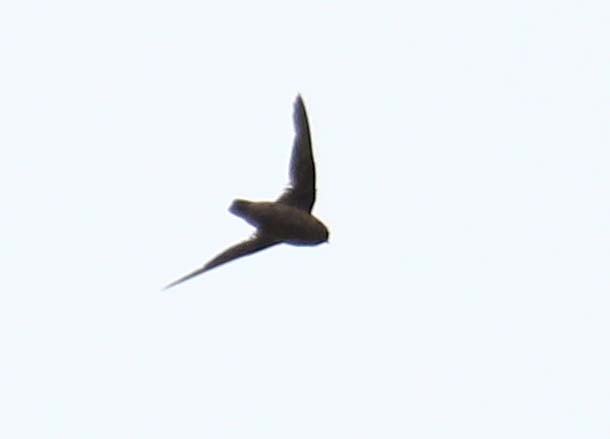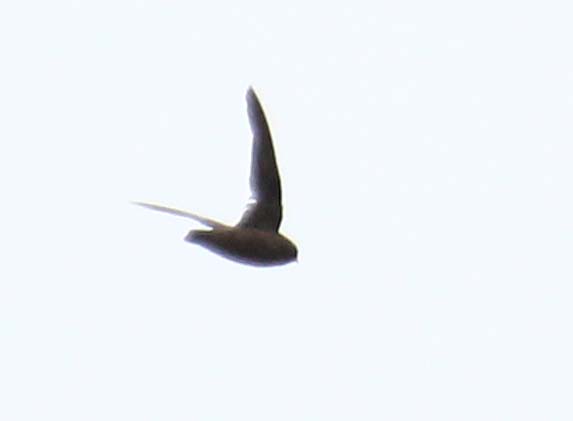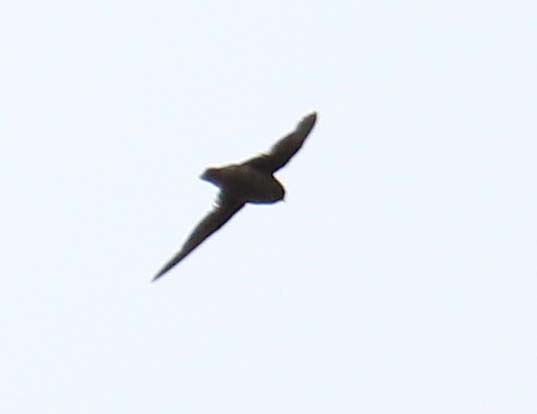
Chiapas and Oaxaca, Mexico July 2015 |
From July 11-23, 2015, Sheridan and I spent four days in the central Chiapas area as part of the GBNA biennial meeting, and then a week in south/central Oaxaca as part of a private group, ably organized and lead by Michael Retter.
These presumed Central American Black Swifts Cypseloides niger costaricensis were photographed in the late afternoon/early evening of two days, in the central valley, near Oaxaca City. On both occasions all the birds were flying purposefully in the same direction, which I interpret as flying to their roosting/nesting sites in the mountains.
The first day (c. 5.40pm, at a gas station near Teotitlan de Valle) there were at least 35 all-dark large (i.e. not Chaetura) swifts passing directly overhead. The second day (c. 7.15pm, at the Mezcal distillery just west of San Pablo Villa de Mitla) there were fewer, perhaps 20+ birds, which included a couple of Chaetura swifts.
I did not see any birds that were clearly Chestnut-collared Swifts, but a few were seen during the day at Monte Alban, so some may have been in these two overflight events.
Unless stated otherwise, all these birds were at the gas station near Teotitlan:
1) One thing that really struck me was how pale these swifts were - clearly paler than the Black Swifts that I have seen in Canada, the U.S., and Guerrero. The strong tail fork plus lack of ventral white indicates that this is an adult. No obvious signs of flight feather molt:
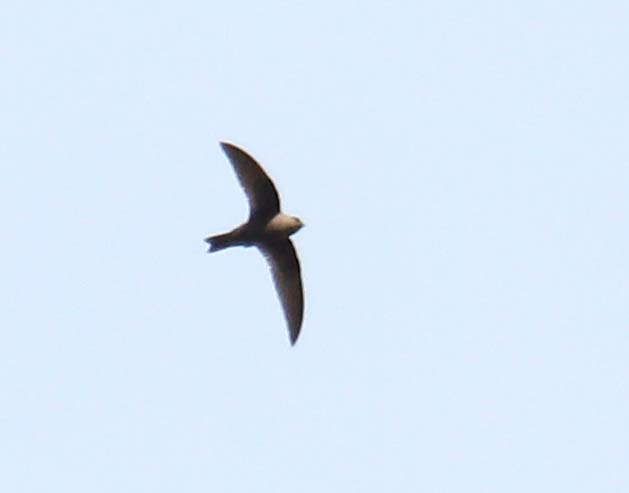
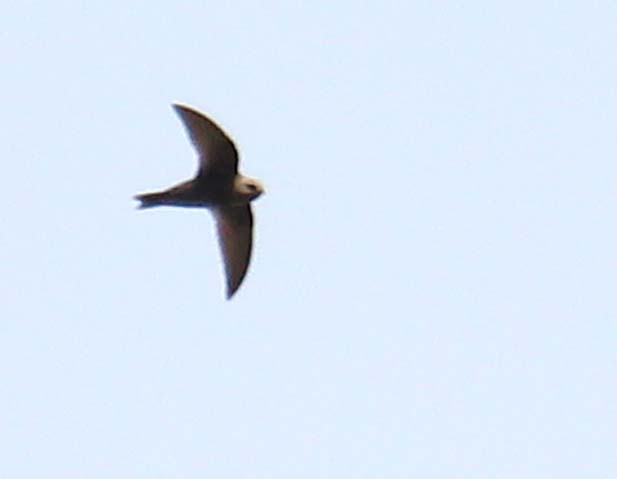
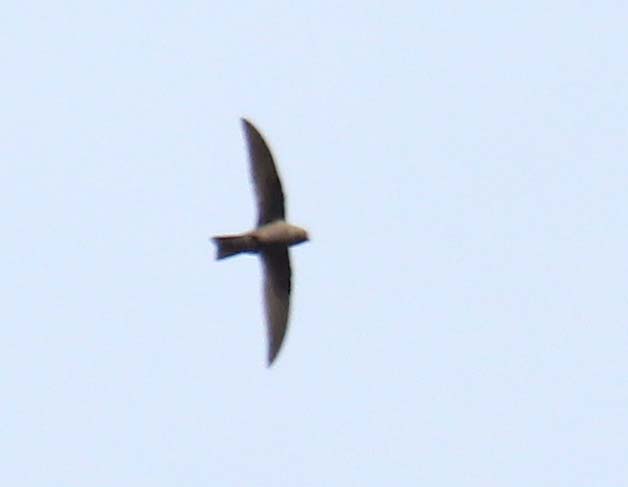
2) I am not sure if the slight gap between the tips of the outermost primaries on the right wing is caused by molt or displacement. The strong tail fork plus lack of ventral white indicates that this is an adult. :
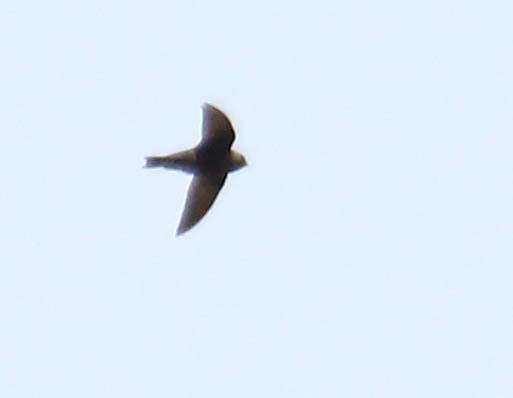
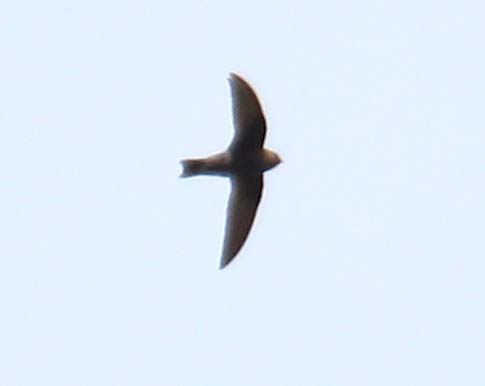
3) I believe this to be a different bird to 2) above, but it too has the slight gap between the tips of the outermost primaries on the right wing, so perhaps this points to an almost-completed primary molt? The strong tail fork plus lack of ventral white indicates that this is an adult. :
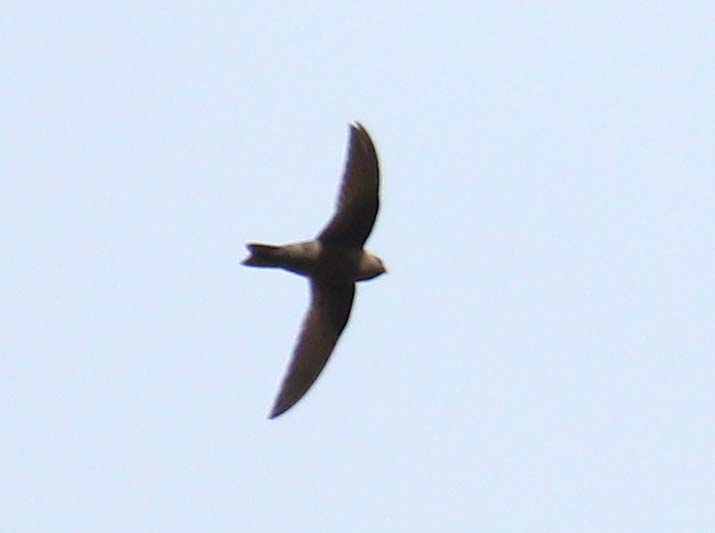
4)
The shallow tail fork plus white scaling in the ventral area indicates a juvenile bird. No sign of flight feather molt.
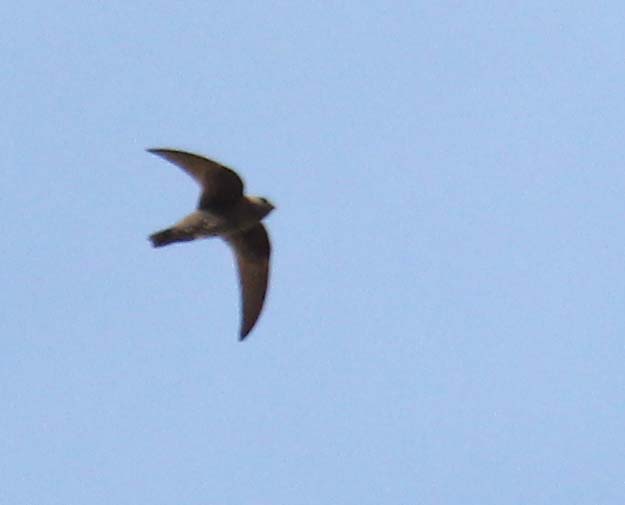
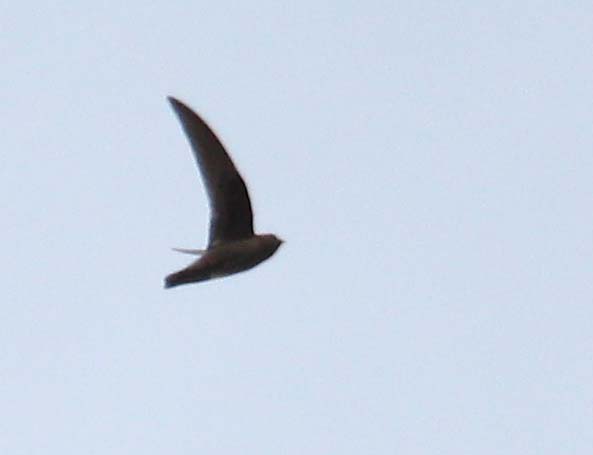
5) The shallow (lacking?) tail fork plus white scaling in the ventral area indicates a juvenile bird. No sign of flight feather molt.
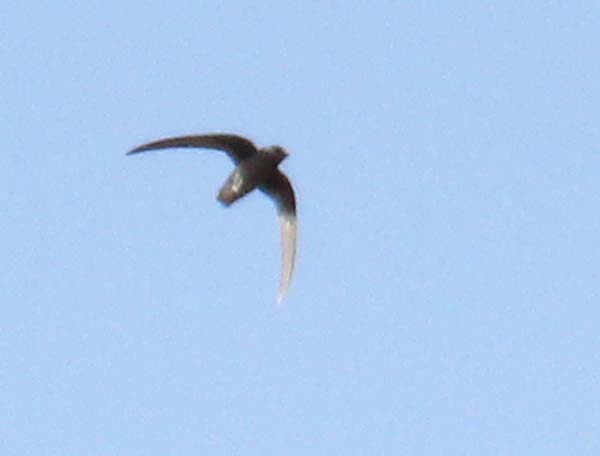
6) This individual was one of those at the Mezcal distillery. Note lack of tail fork, and no obvious white marks ventrally, plus long and rather narrow wings:
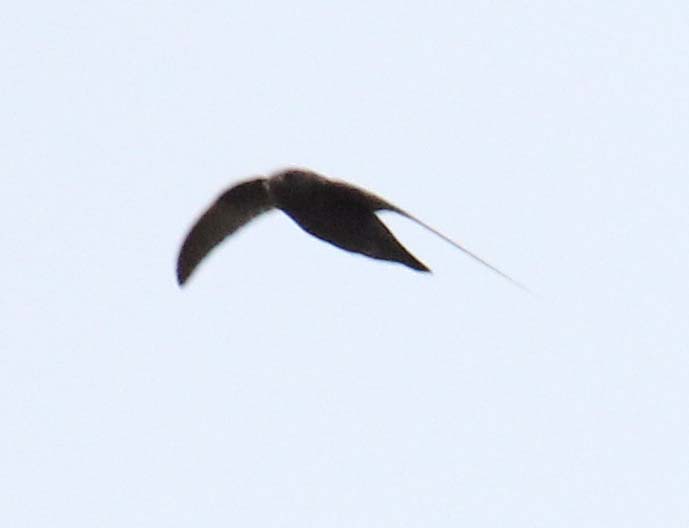
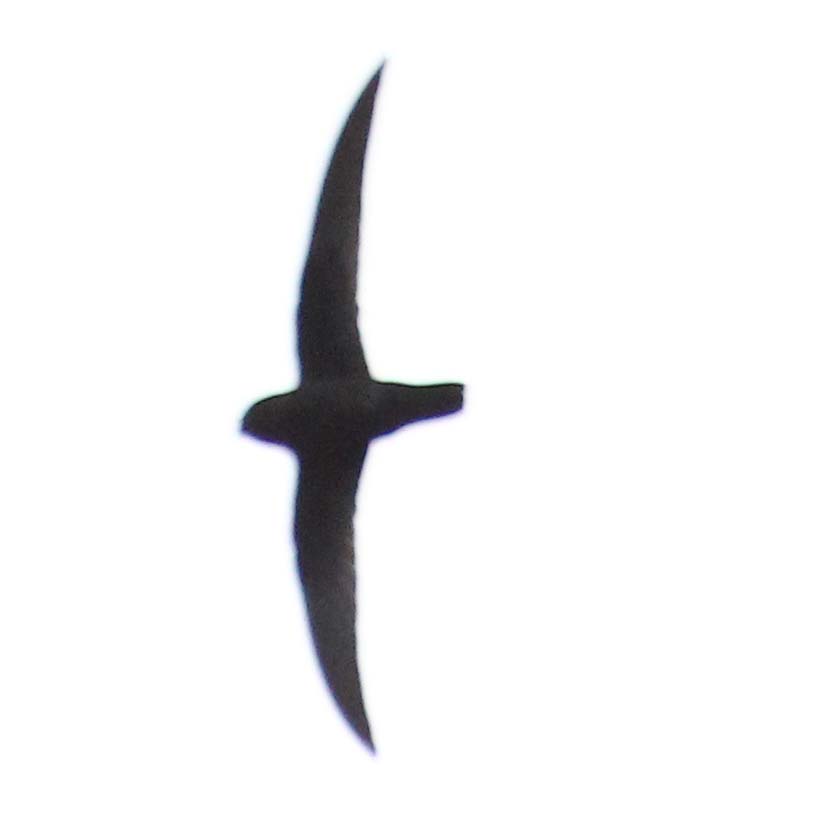
X)
For me this is the most interesting of the birds I managed to photograph. There is clearly flight feather molt underway, with the primaries c.2/3rds complete, and the secondaries still with some way to go. It was slightly smaller, darker, plus shorter-winged and with a shorter tail and head projection. The tail lacks - or almost so - a fork, yet there is no sign of white markings ventrally.
I saw no Chaeturas with this event, but this bird flew more like a Vaux's, compared to all the other birds (but I thought that this more-fluttery flight might be due in part to the somewhat compromised remiges). No vocalizations noted.
I suspect that this is neither a Black Swift nor a Chestnut-collared Swift... could it be C. storeri?
